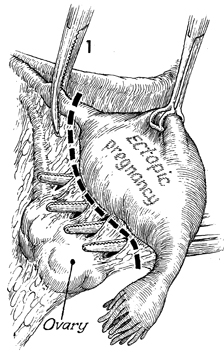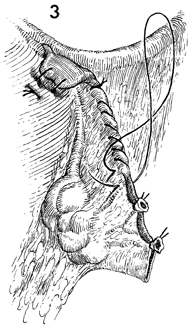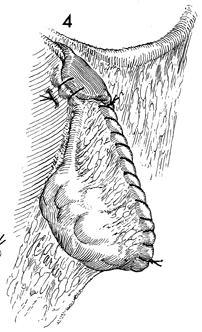|
||||||
Diagnostic Uses of Laparoscopy Demonstration of Tubal Patency via Laparoscopy Laparoscopic Resection of Unruptured Ectopic Pregnancy Ovarian Biopsy via Laparoscopy Electrocoagulation of Endometriosis via Laparoscopy Lysis or Adhesions via Laparoscopy Control of Hemorrhage During Laparoscopy Sterilization by Electrocoagulation and Division via Laparoscopy Silastic Band Sterilization via Laparoscopy Hulka Clip Sterilization via Laparoscopy Sterilization by the Pomeroy Operation Sterilization by the Modified Irving Technique Sterilization by the Minilaparotomy Technique Sterilization - Ucheda Technique Tuboplasty - Microresection and Anastomosis of the Fallopian Tube |
Salpingectomy The most frequent indication for salpingectomy is ectopic pregnancy, but the operation is also performed in isolated cases of inflammatory disease with a unilateral hydrosalpinx. The purpose of the operation is to remove the Fallopian tube while leaving the uterus and ovary intact. Physiologic Changes. The Fallopian tube is removed. Points of Caution. The cornual portion of the Fallopian tube and mesosalpinx are extremely vascular areas. Hemostasis must be insured. Technique
|
|||||
Copyright - all rights reserved / Clifford R. Wheeless,
Jr., M.D. and Marcella L. Roenneburg, M.D.
All contents of this web site are copywrite protected.




